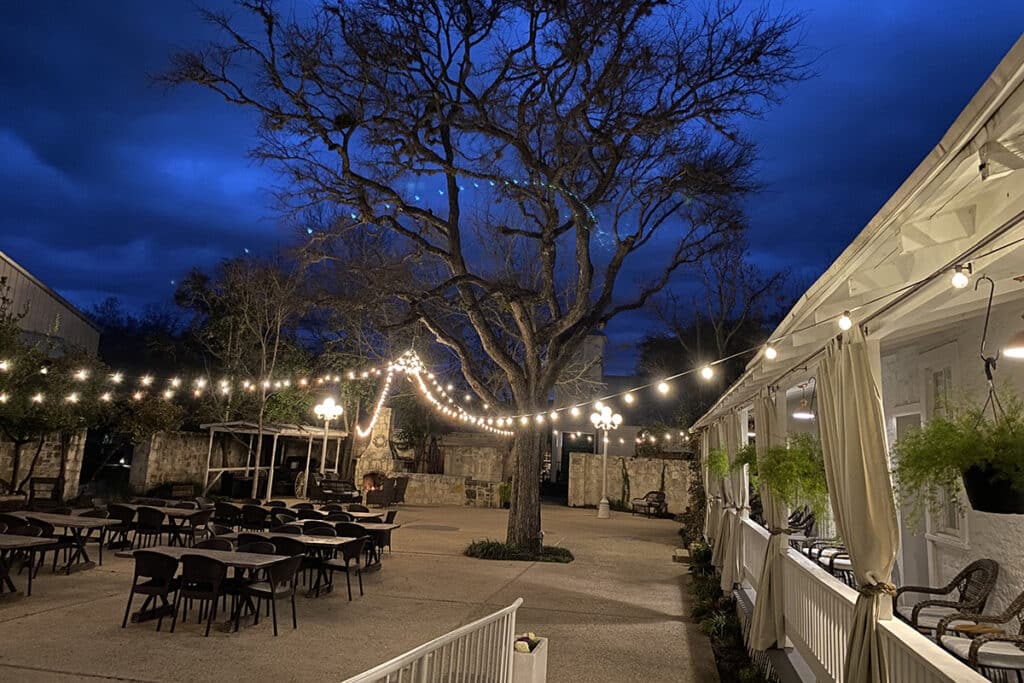Americans are looking out to sea for lighter fare, and shellfish win hands down as the most popular creatures of the sea.
The shellfish family is a very large family indeed. It’s divided into three main classifications: crustaceans, mollusks, and cephalopods. Each has its cadre of enthusiasts. Shrimp, lobster and crab belong to the mostly aquatic crustacean branch of the family. We’re all familiar with their appearance — two pairs of antenna-like appendages in front of the mouth and a segmented shell, or carapace. These are by far the most sought-after kids in the family. The mollusk family, including mussels, clams, oysters and scallops, get asked out to the dance on a regular basis too. They’re invertebrates whose soft bodies are kept safe inside a shell of one or more pieces. No such protection is afforded to most of the cephalopods, creatures whose feet project out of their heads. Squid and octopus are examples. Snails also belong to the family, although they do reside in a rather splendid shell. Members of this part of the family might be viewed as a bit more challenging for diners. But the word is spreading. These cephalopods are a delicious lot, and they’re steadily gaining popularity on menus all across America.
Shellfish come from both saltwater and freshwater. They may be wild-caught or farmed, and the quality and taste will vary. Farmed shrimp generally have less flavor than the wild-caught. The shrimp boats go out for weeks at a time, but their haul is frozen immediately, so the product remains very fresh. I generally buy shrimp still frozen and defrost as needed unless the fresh gulf shrimp have just been delivered to our stores. Most mussels we find at our stores are cultivated, or farmed, and the quality is generally excellent. Once they reach maturity, they’re cleaned and graded. Those from Prince Edward Island (P.E.I.) in Canada, the Atlantic blue mussels, are consistently excellent, as are the ones farmed on the west coasts of Oregon and Washington. The very tasty Mediterranean mussel is also being cultivated in Washington state. The mussels grown in Penn Cove, Washington, are particularly good. New Zealand’s green-lipped mussels are delicious as well. The cultivated mussels are generally very clean and require little preparation, just a quick rinse. Wild-caught mussels, thought by many to have more flavor than their cultivated cousins, generally have thicker shells, sometimes encrusted with barnacles, and their beards — the little tufts that mussels grow to cling onto rocks, docks, and other surfaces — are still intact. It’s easy enough to pull them off with your fingers. These mussels require a bit more careful rinsing under cold running water. Mussels must be alive to be safely consumed. If their shells are not closed tight, tap on the shell and they should slowly close. If they remain open, the mussels have died and must be discarded. Store them on ice, but not immersed in water. They need to breathe, so don’t entomb them in a closed plastic bag, or they’ll die.
It’s remarkably easy to cook mussels. Once they’re clean, put a few inches of water along with some dry white wine in a pot, and bring it to a boil. Add the mussels, along with a little lemon juice, minced shallots and butter if you wish, cover the pot and let it simmer until the mussels open, about 3 to 5 minutes. Scoop out the open ones; if some remain closed, give them a couple of more minutes. If they don’t open in that time, discard them. Serve the mussels along with the cooking liquid in bowls, with crusty bread and a crisp white wine. Chefs take that basic method and run with it. Asian flavors including Chinese and Thai can be substituted, and the Spanish take with chorizo is exquisite. We love the P.E.I. Mussels with Chorizo-Orange Habanero Broth from chef Jesse Perez of Arcade Midtown Kitchen. The robust broth has a definite kick from the habanero chiles.
Of all shellfish, shrimp are America’s favorite, so naturally recipes for the choice crustacean abound. One of my favorites comes from my cooking teacher, Sparky Boxall, who shared this elegant Shrimp Pate´ with her classes. It makes up quickly and can be made a day ahead — two positive attributes that most cooks appreciate.
Shrimp Paté
2 pounds fresh shrimp
1 lemon
1 bay leaf
2/3 cup chopped onion
1 stick butter, melted
1 teaspoon salt
3/4 teaspoon pepper
2/3 cup mayonnaise
3 tablespoons horseradish
3 tablespoons fresh lemon juice
5 dashes Worcestershire sauce
4 dashes Tabasco sauce
Bring a large pot of water to a rolling boil. Squeeze the lemon into it and place the whole lemon rind and the bay leaf in the water. Add the shrimp, cover, and bring back to a boil. Immediately stir, then drain into a colander. Let the shrimp cool, then peel.
Add shrimp to the bowl of a food processor, along with the onion, butter, salt, pepper, mayonnaise, horseradish, lemon juice, Worcestershire and Tabasco sauces. Pulse on and off until the mixture forms a stiff paste. Taste and correct seasonings if needed. Pack into a 3-cup mold or bowl. Chill for several hours or overnight. Unmold onto a serving plate, if desired. Serve with toasted slices of baguette or your favorite crackers.
Arcade‘s P.E.I. Mussels with Chorizo-Orange Habanero Broth
Orange Habanero Broth:
1 yellow onion, chopped
4 cups clam juice
4 cups orange juice
2 cups V8 Picante juice
2 fire-roasted habanero peppers
2 tablespoons olive oil
Salt and pepper
Mussels:
2 pounds mussels, rinsed and de-bearded
2 tablespoons extra virgin olive oil
1 shallot, sliced
2 cloves garlic, minced
2 ounces white wine
1/2 cup cooked Mexican chorizo preferably Garcia Fino brand, plus a little more for garnish
2 cups Orange Habanero Broth
Salt and pepper, to taste
1/4 cup diced Roma tomatoes
2 tablespoons chopped Italian parsley,plus a little more, for garnish
Orange Habanero Broth: In a large saucepan, sauté the yellow onion until soft. Add the clam juice, orange juice, V8 juice, fire-roasted habaneros, and bring to a boil. Lower to a heavy simmer and reduce the liquid by three-quarters of the original mixture. Transfer the reduced mixture to a high-speed blender and purée, adding the olive oil slowly to help emulsify. Season to taste and strain through a fine-hole sieve. Set aside.
Mussels: Clean mussels and set aside, discarding any that will not close when lightly tapped. In a large sauté pan, heat oil to a light smoke and add shallots; cook briefly to soften. Once shallots are soft, add garlic and continue to sauté for 1 minute. Add mussels and toss evenly with shallots and garlic. Deglaze with white wine and add cooked chorizo and toss evenly. Add Orange Habanero Broth and cover the pan to allow the mussels to steam for 1-2 minutes, or until all mussels have opened their shells. Season with salt and pepper, add diced tomatoes and parsley. Toss evenly.
Transfer to a large serving bowl and top with a bit more chorizo and chopped parsley for added color. Serve with seasoned grilled or toasted French bread. Makes 2 servings.
At The Grill at Leon Springs, executive chef Thierry Burkle prepares these peerless Escargot — French Snails in Garlic Butter, and if you’ve never ventured into the world of snails, this is where to start! Chef Burkle uses the canned snails, which makes this recipe very doable. There’s no need to use snail shells for the recipe, either, as he serves these flavorful snails in small casserole dishes. There are two steps — first you’ll simmer the snails in wine, garlic and herbs. This is best done ahead so the snails can absorb the flavors. When it’s time to start cooking, bake them with the additional ingredients, then serve.
The Grill at Leon Springs Escargot — French Snails in Garlic Butter
2 (16-ounce) cans snails
3 bay leaves
2 sprigs fresh thyme
6 cloves garlic, sliced
2 cups red wine
1 pound butter
2 bunches Italian parsley, finely chopped
10 cloves garlic, chopped
2 teaspoons Worcestershire sauce
1 teaspoon Tabasco sauce
4 teaspoons cognac
Rinse the snails under running water, thoroughly. Place them in a pot along with the bay leaves, thyme, garlic and wine. Bring to a low simmer, reduce the liquid down to about 1/2 cup, let cool and refrigerate.
Preheat oven to 450°F. When you’re ready to cook, combine the butter, parsley, garlic, Worcestershire sauce, Tabasco sauce and cognac with the snails. Divide the mixture between 2 or more ovenproof dishes. Place in the preheated oven and cook for about 10 minutes, or until bubbly and hot. Serve with lots of crusty bread and a glass of red wine. Makes 2 main course servings or 4 appetizer servings.




